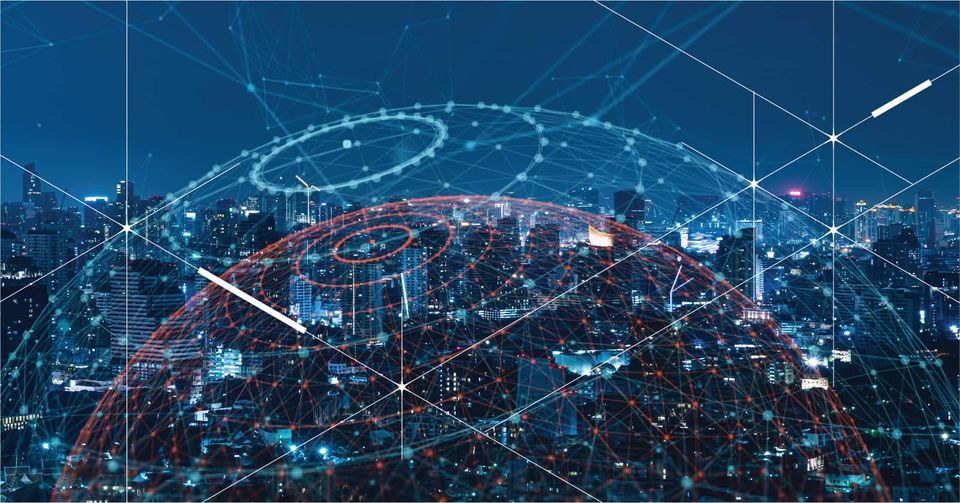Understanding 5G & Time Critical Services

Introduction
5G is the fifth generation of wireless communication technology, which promises to provide faster data rates, lower latency, and greater capacity than its predecessor, 4G. One of the key benefits of 5G is its ability to support time-critical services, such as industrial automation, remote surgery, and autonomous vehicles.
In this article, we will discuss what time-critical services are and how 5G supports them. We will also discuss the technical aspects of 5G that make it well-suited to time-critical applications.
What are Time-Critical Services?
Time-critical services are applications that require ultra-low latency and high reliability. These are applications where even a small delay or interruption can have serious consequences, such as industrial automation, remote surgery, and autonomous vehicles.
For example, in an industrial automation scenario, a delay in the communication between a sensor and a control system could result in equipment failure or even injury to workers. Similarly, in a remote surgery scenario, a delay in the communication between a surgeon and a robotic system could have life-threatening consequences.
To support time-critical services, a network must provide ultra-low latency and high reliability. Latency refers to the time it takes for a signal to travel from the source to the destination, while reliability refers to the ability of the network to deliver the signal without loss or interruption.
How Does 5G Support Time-Critical Services?
5G is designed to provide ultra-low latency and high reliability, making it well-suited to time-critical services. There are several technical aspects of 5G that enable it to support these services:
Network Slicing
Network slicing is a technique that allows a single physical network to be partitioned into multiple virtual networks. Each virtual network can be customized to meet the specific requirements of different applications and services.
This means that a 5G network can provide a dedicated slice for time-critical services, with ultra-low latency and high reliability. This slice can be isolated from other slices, ensuring that it is not affected by congestion or other issues on the network.
Edge Computing
Edge computing is a technique that moves processing power closer to the source of data, reducing latency and improving reliability. In a 5G network, edge computing can be used to process data locally, rather than sending it to a centralized data center.
This means that time-critical services can be processed quickly and reliably, without the need to transmit data across the network. This reduces latency and improves reliability, making it well-suited to time-critical services.
Beamforming
Beamforming is a technique that uses multiple antennas to focus the transmission of a signal in a specific direction. This improves the signal strength and reduces interference from other signals.
In a 5G network, beamforming can be used to improve coverage and reliability, particularly in areas with poor signal quality. This means that time-critical services can be supported even in areas with poor network coverage, improving the overall reliability of the network.
Massive MIMO
Massive MIMO (Multiple Input Multiple Output) is a technique that uses multiple antennas to transmit and receive signals simultaneously. This improves the capacity and performance of the network, enabling it to support more users and devices simultaneously.
In a 5G network, massive MIMO can be used to improve coverage and reliability, particularly in areas with high network congestion. This means that time-critical services can be supported even in areas with high network congestion, improving the overall reliability of the network.
Conclusion
5G is well-suited to support time-critical services, such as industrial automation, remote surgery, and autonomous vehicles. Its ability to provide ultra-low latency and high reliability makes it a critical technology for these applications.
Network slicing, edge computing, beamforming, and massive MIMO are some of the key technical aspects of 5G that enable it to support time-critical services. These techniques enable 5G to provide a dedicated slice for time-critical services, process data locally, improve coverage and reliability, and support more users and devices simultaneously.
However, there are still some challenges to be addressed before 5G can fully support time-critical services. For example, there is a need for standards and protocols to ensure interoperability between different networks and devices. There is also a need for security measures to protect against cyber threats and ensure the privacy of sensitive data.
Despite these challenges, 5G is a critical technology for time-critical services, and its development and deployment are essential for the success of these applications. As 5G continues to evolve and mature, we can expect to see even greater support for time-critical services, enabling new and innovative applications that were not possible before.
